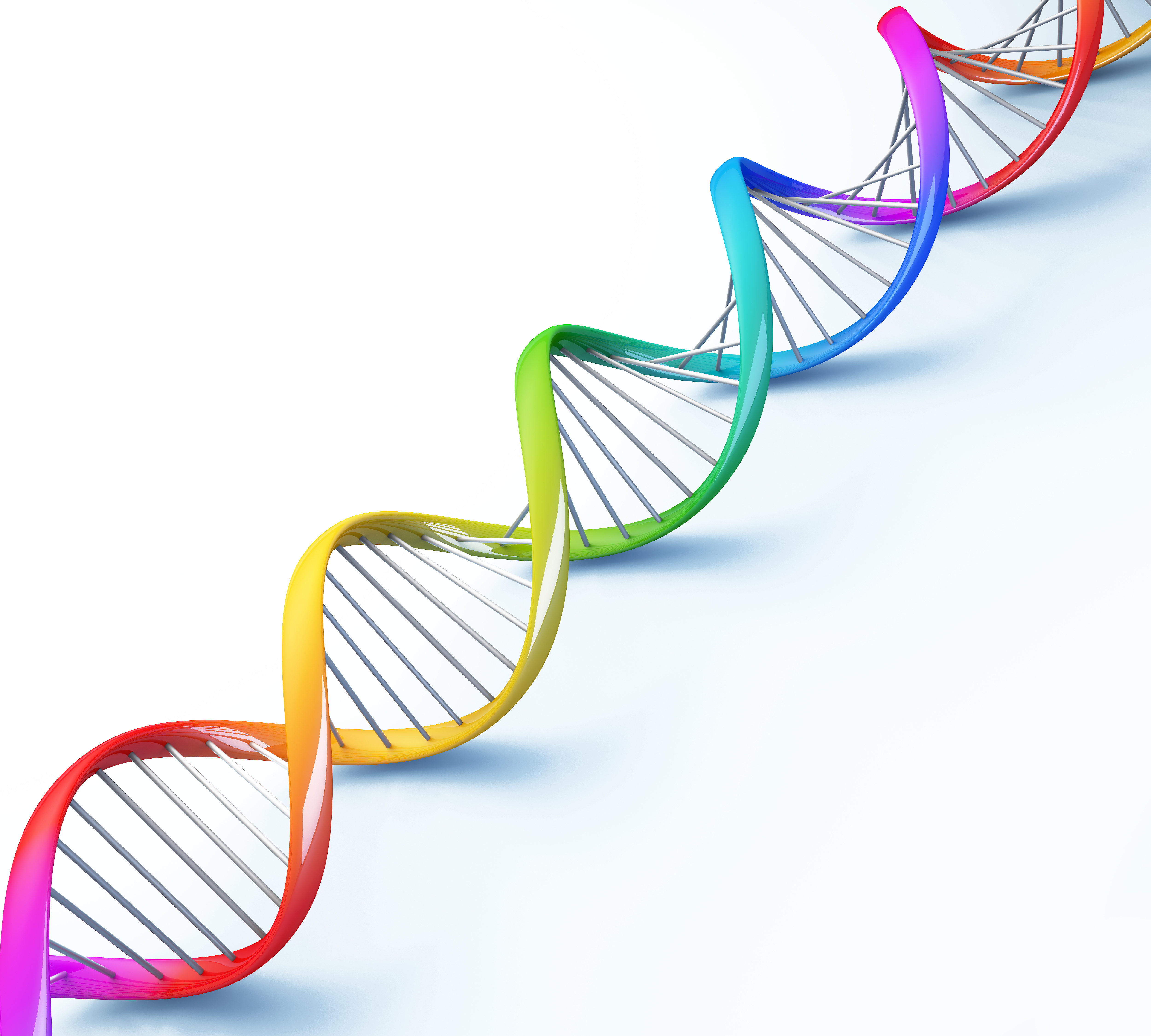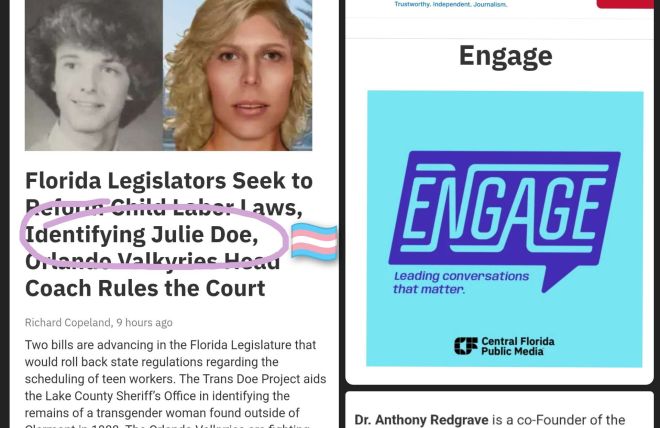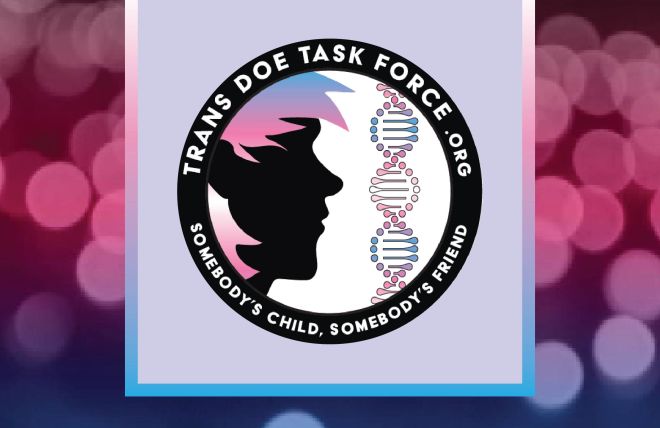
While we at the Trans Doe Task Force encourage anyone and everyone to help by sharing their raw DNA data to GEDmatch, the idea of a DNA test in general might be intimidating or off-putting to gender-variant people. In this article, we will discuss the ways in which anyone can have their DNA tested and share their results, even if their gender identity doesn’t match their chromosomes.
Genetic Genealogy Basics
When a person activates a DNA test and their results come back, usually the first thing that they see (and what the advertisements draw attention to) is the ethnicity admixture – a pie chart or map that shows how much of their genetic material comes from different global regions. The next thing that they see is a list of other people – genetic cousins – with whom they share genetic material. In short, these are people with whom the tester shares a common ancestor, from whom a segment of their DNA was passed down. Upon closer inspection, a DNA tester will see that all of these genetic cousins are sorted by binary gender. This is because of the way that chromosome 23 is usually passed from parents to children.
Usually, a female person will carry two X chromosomes (one from their father and one from their mother) and a male person will have one X from their mother and one Y from their father. DNA testing companies operate under the assumption that their clientele will either be male (XY), or female (XX), and as such, their databases treat all DNA results accordingly. When a person purchases and activates a DNA test kit, they are generally expected to select M or F, and the resultant DNA data will be treated as either XX or XY. In general, this is helpful to genetic genealogists because one can usually assume that a male tester has inherited an x chromosome from his mother, and therefore anyone who matches that male tester on his x chromosome must be related to him through his mother, and any male tester who matches another male tester’s Y chromosome descend from the same paternal line.
There are, however, many different expressions of the 23rd chromosome, and many natural variations of sex and gender. In rare instances, there is even mosaicism, in which the 23rd chromosome presents with a certain configuration in some cells, and a different configuration in another. For a person who knowingly carries a different chromosomal karyotype than their gender identity, the selection of “M” or “F” on any form of any kind can be a source of anxiety. For something like a DNA test, which is entirely voluntary, it can feel like enough to make someone change their mind about testing. It also raises questions about how the test will be processed.
“If I mark my kit as male, but I know that I have an XX karyotype, what will that do to my results? If I have XXY, or XX/XO mosaicism, what do I select in the first place? How will my kit appear to others who are searching for matches?”
The cheapest and most basic test is the autosomal DNA test, which is usually sufficient Then, depending on how complicated the research question or mystery is, a MtDNA or Y-DNA test may be useful. For most people’s purposes, those are not necessary. Autosomal tests will return results from both maternal and paternal sides of a person’s family that will connect them with plenty of relatives. Mitochondrial (MtDNA) tests pertain to the direct maternal line, not in terms of recent ancestors but in terms of spans of thousands of years. Y-DNA is similar, but of course only those with an intact Y chromosome will be able to take this test. Y tests trace the direct paternal line. Sometimes, a Y test can help a researcher make a very good guess of a distant ancestral paternal surname. These two specialized tests are also quite a bit more expensive. Most people can get a lot of mileage out of an autosomal test, especially if they download their raw data and upload it to other sites that accept it, such as GEDmatch, Family Tree DNA and MyHeritage. As of this writing, Ancestry and 23andMe are the only major testing companies that don’t allow uploads of results from other companies.
The personal experience of an intersex person testing with Family Tree DNA
One DNA tester who was already aware of the possibility of a sex chromosome variance tested with Family Tree DNA. He selected Male as the sex associated with his DNA sample for an autosomal test, even though he knew there was a strong possibility that he may not carry a Y chromosome. A few weeks later, when the lab received his results, he received this email regarding his kit:
Dear Kit Manager,
I am writing to follow up on some quality control checks for your Family Finder test on kit ******. The account and the release form that was sent in with the samples are marked male and the name on file is **********. We would like to verify if the sample donor for this kit is biologically male or if the swabs are from a genetically biological female. Please also let me know if you would like the gender designation listed in the database for this account to be changed or left as male.
Please note this question is asked as part of a standard quality check procedure and you can share as much or as little information as you would like. Nothing that is shared with us in confidence will be posted publicly. We only need to know if the sample coming up as possibly female does or does not indicate a potential problem and what gender you would like this kit to be listed under in the database.
The tester responded to the email stating that he was aware of a potential intersex condition. The kit was left marked as male. After a while, as the tester learned more about X inheritance, he wondered if the kit having been marked as genetically male was having an effect on his results. He emailed support again, asking if his test was being processed in the database as having only one X chromosome, or if both were present. The support technician responded:
The X matching algorithm would not look at only one X chromosome if two are present.
Therefore, at least in the case of Family Tree DNA, the gender marker associated with a kit has no bearing on the way in which the data is compared to other kits in the database. If you are in this situation, you may get an email asking for further information, but it is strictly confidential. All you need to do is reply with what gender marker you want associated with the kit, and leave it at that. Gender variance does not prevent you from participating in genetic genealogy research.
Please note: It is important to remember that other researchers are operating under the assumption that a person marked as male in a testing pool must therefore have only the X chromosome of his mother. In the case of an XX male or a homozygous X female, this will not be the case.
Testing with Ancestry
If a person tests with Ancestry, their default profile icon is a clearly gendered face inside of a pink or blue circle. However, there are no other indicators of gender on a public Ancestry DNA profile beyond this. An easy fix to hide the gender of a tester completely is to simply upload a profile picture that doesn’t indicate gender. In addition, the test settings can be easily edited to select a male or female gender without it affecting the way the kit is handled inside of the system.
Marking data as private
Most, if not all DNA testing companies give testers the option of marking their data as private, making it so that they do not show up as a match when other testers run searches for genetic matches. For commercial testing companies, choosing this often comes with severe limitations to the extent to which the service is useful for the tester. This also is to the detriment of other testers who might be helped by the presence of additional data for the sake of identifying common ancestors.
With Family Tree DNA, a tester can choose to limit the extent to which their DNA results are matched to others by entering their account settings, and changing the matching levels presented in the “privacy and sharing” tab. Testers can also opt out of matches by unchecking the “consent to participate in matching” box. This can be changed at any time. Choosing to not participate in matching not only makes it so that a match doesn’t show up in the results of others, but it also prevents that tester from seeing any of their own matches. With Ancestry DNA, testers can also opt out of DNA matches, and opt back in if they desire. As with Family Tree DNA, doing so will make the tester unable to see their matches.
Testers also have the option of deleting their data from any site with which they test. In addition, they can request for the physical sample they submitted to be destroyed by contacting customer support. Family Tree DNA states this clearly in their terms of service and will destroy a sample upon request. Ancestry does not state this outright, but you can contact them in order to have it done. If you’re considering testing with a different company and you can’t find it specified in their terms of service, call customer support and ask.
Why you should upload your raw DNA Data to GEDmatch
GEDmatch is a free, third-party DNA comparison database with a number of advanced tools for comparison. GEDmatch does not provide or process DNA samples, but anyone who has tested with any other company can download their raw autosomal DNA data and upload it to GEDmatch’s database.
Some things that GEDmatch gives researchers that other companies don’t:
- The ability to compare DNA test results to those of people who have tested with other companies
- The ability to create a kit to represent a deceased ancestor by comparing and combining segments from the kits of that ancestor’s living descendants and cousins
- The ability to mark a kit as “Private” or “research,” which prevents it from appearing in the match results of another person but still gives the same functionality otherwise
- The ability to upload a GEDCOM file associated with a kit and search other user-submitted GEDCOMs for common ancestors
- The ability to search for DNA matches that also have an associated GEDCOM, making it easier to find common ancestors with genetic cousins
- Access to more than one admixture (ethnicity estimate) project, including specialized admixture projects for specific ethnicities such as African or Asian
- Comparison to archaic DNA samples from archaeological remains
- The ability to upload DNA data of unidentified deceased individuals in order to identify them using forensic genealogy techniques (always with the kit marked as research” and unavailable to other researchers)
- The ability to upload DNA data created from residual samples left at crime scenes in order to identify them using forensic genealogy techniques, as in the case of the suspected Golden State Killer, Joseph DeAngelo
If you feel concerned about your privacy and want to disable matching with a commercial testing company, but you would also like to benefit from using your DNA matches to further your genealogical research, GEDmatch could be of great help to you. While GEDmatch has a more limited database to draw from than the major testing companies, the ability to remain invisible to other users while conducting your own research is something that you can’t get from a commercial company.
Uploading to GEDmatch is simple. The hardest part is finding and downloading your raw DNA data from your testing company. This is usually found in your profile settings. By making an account at GEDMatch and logging in, you can access their comprehensive wiki that has instructions on how to download your raw data and upload it.
To sum it up, there are many reason why it can be safe, private, and beneficial to take a DNA test. By utilizing the advanced features and privacy settings offered by GEDmatch, you can participate in researching your own genetic genealogy, and also contribute to a pool of testers who may in some small way contribute to bringing closure to Doe cases.
“How could genealogy help me if I’m disconnected from my family?”
Transgender and gender-variant people often have disconnects with their living family. It is a sad reality, but many GLBTQ people have very tenuous ties to their parents and grandparents. It can make them feel lost in a sea of space and time, with no lasting connections to the people around them. Genealogy, and genetic genealogy in particular, can help create a sense of belonging, and a context within the world at large. When an adoptee discovers their biological parents through genetic genealogy, it is often an amazingly grounding feeling. Even if those parents are deceased or disinterested in speaking to the adoptee, there is still a sense of connection that comes with that knowledge that lasts after the exhilaration of the discovery or the pain of rejection. Similarly, when a person who has been disconnected from their immediate family gets to know the longer and farther reaching story of their family history, they can experience a similar kind of peace and grounding. For example, a person with an artistic or musical bent might discover that the grandfather who refuses to talk to them now comes from a long line of musicians and storytellers. When a person looks at a chromosome browser and sees a segment that they share with a genetic cousin, and then identify the common ancestor from whom they acquired that segment, they are in actuality looking at a representation of the part of that ancestor that lives on in them. It is an empowering thing to be able to say “this is in my DNA” and back that statement up with scientific fact. It can, in fact, be healing and strengthening in the assertion of your identity and your right to your place in the world, and your family.
Additional resources
- GEDmatch
- Video on how to upload Ancestry DNA to GEDmatch
- Written instructions on uploading Ancestry DNA to GEDmatch
- Intersex Society of North America
- World Health Organization: Gender and Genetics
- Article summarizing recent findings on genetics and transgender people
- ISOGG (International Society of Genetic Genealogist) Wiki page of resources for beginning genetic genealogy
By Anthony Redgrave






